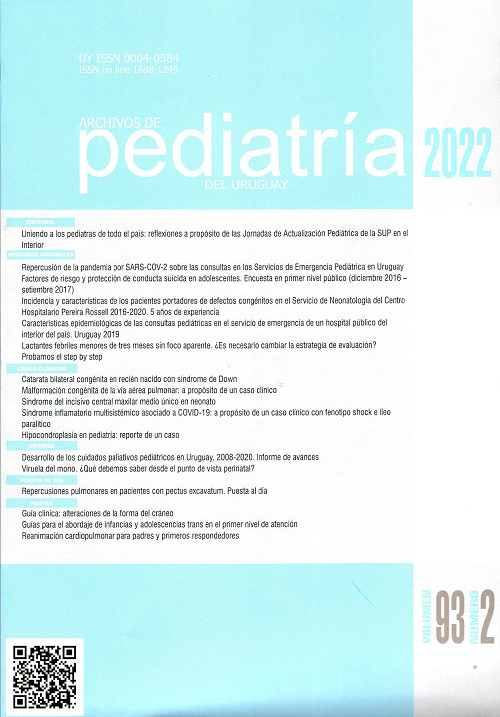Abstract
Introduction: self-harm (SH) and suicide have increased in adolescents, and they have become a high health priority.
Objective: to establish the epidemiology and its relationship with risk factors (RF) and protection (PF) of suicidal behavior in users of a Primary Care Adolescent Center of the State Health Sector (December 2016 - September 2017).
Materials and methods: confidential survey of adolescents of both sexes, between 12 and 19 years of age. We carried out a descriptive analysis in order to compare RF and PF between ages (12 to 14 and 15 to 19); sex; previous SH self-harm versus its absence and institutionalization or not. p less than 0.05 was considered statistically significant. Data were entered into Excel and analyzed using Epi Info 7.2.0.1.
Results: 107 interviewees, 60 females, age: 13.3 (mean); Most frequent previous SH between 15 and 19 years and female sex (p <0.05); 21 were institutionalized (19.6%). Without prior SH 94 (87.9%) and 13 (12.1%) at least one. Of the 13 with prior SH, 7 (53.8%) institutionalized (p <0.05 CI> 95%). PF p <0.05 CI> 95 %: recreational activity, high self-esteem, and good problem-solving skills. RF p <0.05 CI> 95 %: child abuse, sexual abuse, death of a loved one, substance use and mental illness. Comparing ages, PF: close family, projects and friends (p <0.05 CI> 95%); RF: substance use, mental illness, child abuse, sexual abuse, family with mental illness, death of loved one, sleep disorder, institutionalization, suicidal ideation and suicidal planning (p <0.05 CI> 95%). When comparing sexes, PF were not found p <0.05; family member with mental disease p <0.05 CI> 95% as RF.
Conclusions:
recreational activities should be encouraged in adolescents and Mental Health assistance should be provided to those who present RF of suicidal behavior.

This work is licensed under a Creative Commons Attribution 4.0 International License.
Copyright (c) 2022 Marcos Delfino, Lucía D´Acosta, Juan Ramón Pérez, Cristina Larrobla, Karina Machado, Catalina Pírez

